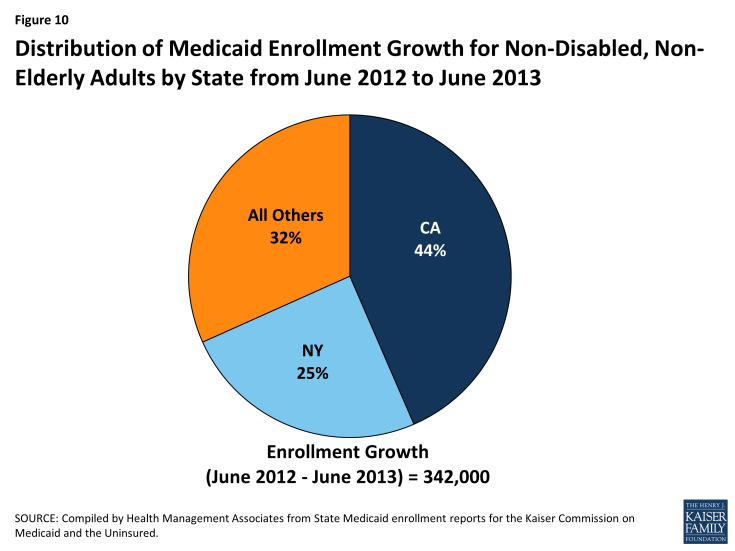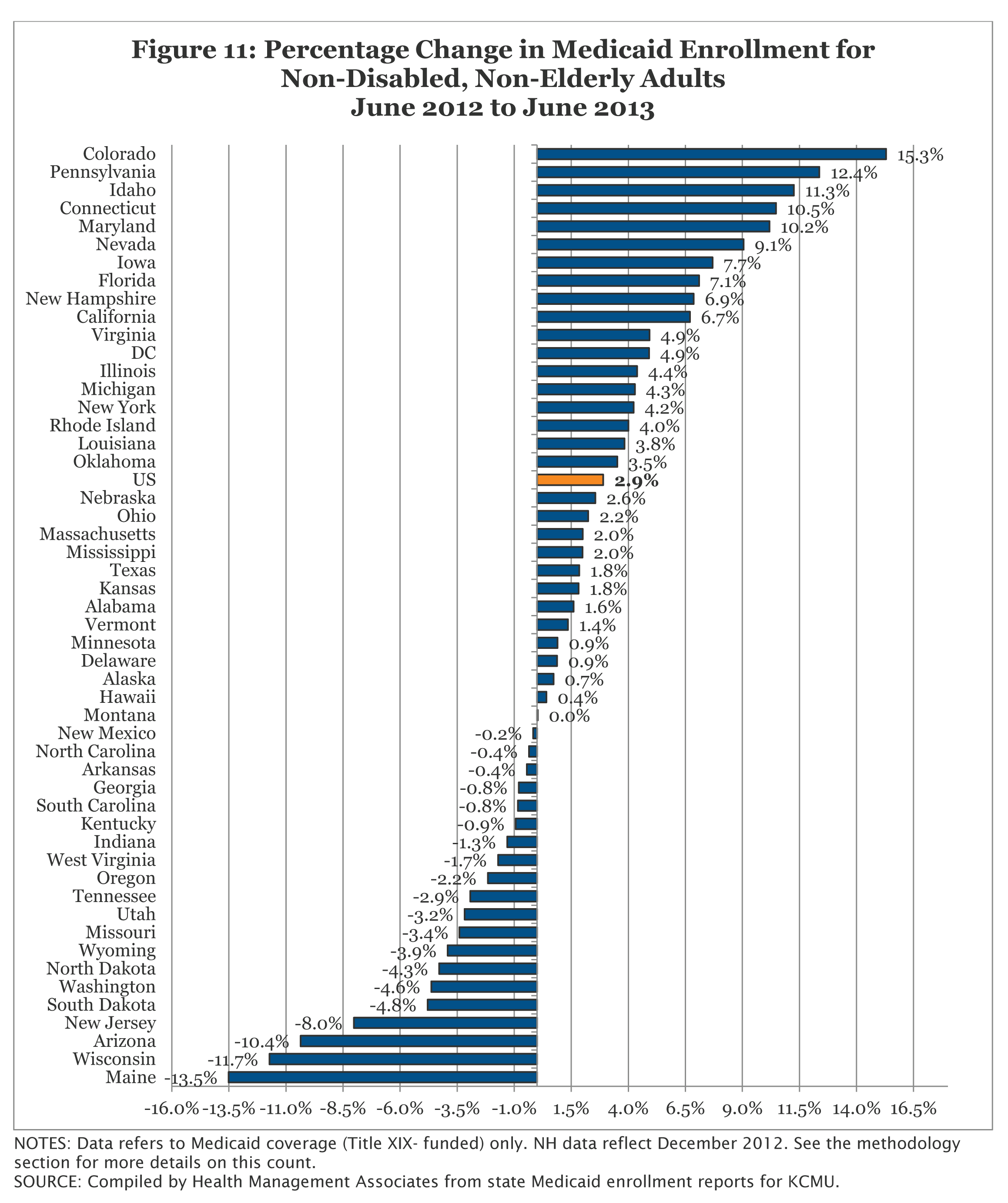Medicaid Enrollment: June 2013 Data Snapshot
Non-Disabled, Non-Elderly Adults
In June 2013, nearly 12.2 million non-disabled, non-elderly adults were enrolled in Medicaid programs across the country. In spite of some states expanding eligibility, enrollment growth among this group has fallen to a post-recessionary low at 2.9 percent. An additional 342,000 adults were enrolled in Medicaid programs between June 2012 and June 2013; over two-thirds of this growth occurred in two states (California and New York.) (Figure 10)

Figure 10: Distribution of Medicaid Enrollment Growth for Non-Disabled, Non-Elderly Adults by State from June 2012 to June 2013
- California’s increase among adults enrolled in Medicaid was driven by continued growth in its Low Income Health Program (LIHP.) Enacted as part of the state’s Bridge to Reform waiver, LIHP allows counties to expand eligibility to adults with incomes up to 133 percent FPL.1 Counties began LIHP enrollment in July 2011; California’ LIHP enrollment continued to rise as an additional 161,414 adults enrolled between June 2012 and June 2013.
- New York saw an additional 83,800 adults enrolled in Medicaid during this same period. Growth may have been driven by implementation of 12 month continuous eligibility for several groups, including children and adults, in April 2013.2
Five states (Colorado, Pennsylvania, Idaho, Connecticut, and Maryland) saw double digit growth among this group during the period from June 2012 to June 2013 (Figure 11); three of these states (Colorado, Connecticut and Maryland) have expanded coverage to childless adults recently. During this same period, 20 states saw declines in enrollment among non-elderly adults. The largest declines occurred in Arizona, Maine, and Wisconsin. Each of these states recently implemented eligibility restrictions permissible under exemptions from the MOE.
- Arizona saw 42,400 fewer adults enrolled in their Medicaid program driven by the continued decline among their childless adult population. As part of its waiver renewal, the state implemented an enrollment freeze for this population in July 2011. Between June 2012 and June 2013, 40,000 fewer childless adults were enrolled.
- Maine reported 12,900 fewer adults enrolled in Medicaid in June 2013 compared to one year earlier. This decline was driven by declines among their childless adult waiver program as well as among parents and step-parents. After certifying a budget shortfall to qualify for an exemption from the MOE provisions, the state reduced eligibility levels for parents from 200% FPL to 133% FPL in March 2013. Enrollment in the state’s childless adult waiver program has also been capped for several years.
- Wisconsin reported 34,800 fewer adults enrolled in Medicaid in June 2013 compared to one year earlier. Enrollment for childless adults under their waiver has been closed for several years. In July 2012, the state added premium requirements to this group. Wisconsin also changed its crowd-out policy for parents and adults with incomes over 133 percent FPL; if they have access to health insurance that cost 9.5 percent or less of income, they are excluded from coverage. A 12 month restrictive reenrollment period for non-pregnant, non-disabled adults over 133 percent FPL was also instituted for those that do not pay their premiums.3



